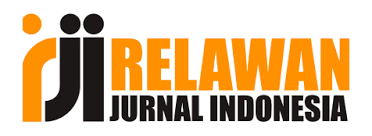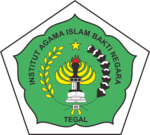Pendidikan Islam Masa Periode Safawiyah dan Mughal
DOI:
https://doi.org/10.62490/latahzan.v14i1.325Keywords:
Medieval Period, Education, Islam, Usmani, Safawi, MughalAbstract
The Middle Period in the Periodization of Islamic History refers to the existence of three major kingdoms namely the Ottoman Empire in Turkey, the Safavid Empire in Persia and the Mughal Empire in India. These three kingdoms in the middle period illustrate the shift of non-Arab domination after the Arab domination in the classical period. In general, the medieval period is considered a period of decline. However, the historical facts about education during the three kingdoms provide a picture of development and progress. During the Ottoman Turkish period, madrasas were encouraged to study various sciences. Many educational institutions emerged during the reign of the Ottoman Empire, one of which was the madrasa. The first Ottoman madrasah was founded in Izmir in 1331 AD. The state of education in the Safawi Kingdom was shown by the existence of a very thick academic atmosphere. Among them is shown by the existence of tolerance and freedom of opinion. Despite the harsh indoctrination during the period of Shah Abbas II, the freedom of liberal thought had gained momentum. In the Mughal Empire, education received considerable attention. The Kingdom encourages mosques as a place of religious learning for the community in addition to being a place of worship. The mosques have been provided with ulama who will teach various branches of religious knowledge. In fact, the mosque has also provided special rooms for students who want to live in the mosque during their education.
References
Ardabeli, Syekh Safiuddin. 2003. Ensiklopedi Islam. Jakarta: PT. Ikrar Mandiri Abadi. Asrohah, Hanun. 2001. Sejarah Pendidikan Islam. Jakarta: Logos Wacana Ilmu.
https://en.m.wikipedia.org/wiki/Is-lamic_architecture
https://sejarahdunia.web.id/beber-apa-bangunan-peninggalan-dinasti-mu-ghal-india/
https://whc.unesco.org/en/list/251
https://www.culturalindia.net/indian-forts/agra-fort.html
Boswort, CE. 1993. Dinasti-Dinasti Islam. terj. Ilyas Hasan. Bandung: Mizan.
Hamka.1994.Sejarah Umat Islam. Singapura : Pustaka Nasional PTE LTD.
Hanipudin,S.(2019). Pendidikan Islam diIndonesia dari Masa ke Masa. Matan : Journal Of Islam And Muslim Society, 1(1), 39-53. doi:10.20884/1.matan.2019.1.1.2037
Lapidus, Ira M. 2000. Sejarah Sosial Umat Islam. Jilid I. terj. Ghufron A. Masudi. Jakarta: Rajawali Press.
Lapidus, Ira M.2000. Sejarah Sosial Umat Islam. Jilid II. terj. Ghufron A. Masudi. Jakarta : Rajawali Press.
Maryam dkk,Siti.2003.Sejarah Peradaban Islam-Dari Masa Klasik Hingga Modern. Yogyakarta : LESFI. Cet.II.
Nata, Abudidin. 2011. Sejarah Pendidikan Islam. Jakarta: Kencana.
Nizar, Samsul. 2007. Sejarah Pendidikan Islam (Ed). Jakarta: Prenadamedia Group. Supriadi, Dedi. 2008. Sejarah Peradaban Islam. Bandung: CV.Pustaka Setia. Cet.X.
Syalabi, Ahmad. 1998. Sejarah dan Kebudayaan Islam: Imperium Turki Usmani. Jakarta: Kalam Mulia.
Taufiqurrahman. 2003. Sejarah Politik Masyarakat Islam. Surabaya: Pustaka Islamika.
Yatim, Badri. 2008. Sejarah Peradaban Islam-Dirasah Islamiyah II. Jakarta: Logos Wacana Ilmu.Zuhairini.2006. Sejarah Pendidikan Islam. Jakarta:Bumi Aksara.
Downloads
Published
How to Cite
Issue
Section
License
Copyright (c) 2023 Noor Arofatun Muthoharoh

This work is licensed under a Creative Commons Attribution-ShareAlike 4.0 International License.
The copyright of the received article shall be assigned to the journal as the publisher of the journal. The intended copyright includes the right to publish the article in various forms (including reprints). The journal maintains the publishing rights to the published articles.
In line with the license, authors and any users (readers and other researchers) are allowed to share and adapt the material. In addition, the material must be given appropriate credit, provided with a link to the license, and indicated if changes were made. If authors remix, transform, or build upon the material, authors must distribute their contributions under the same license as the original.
















